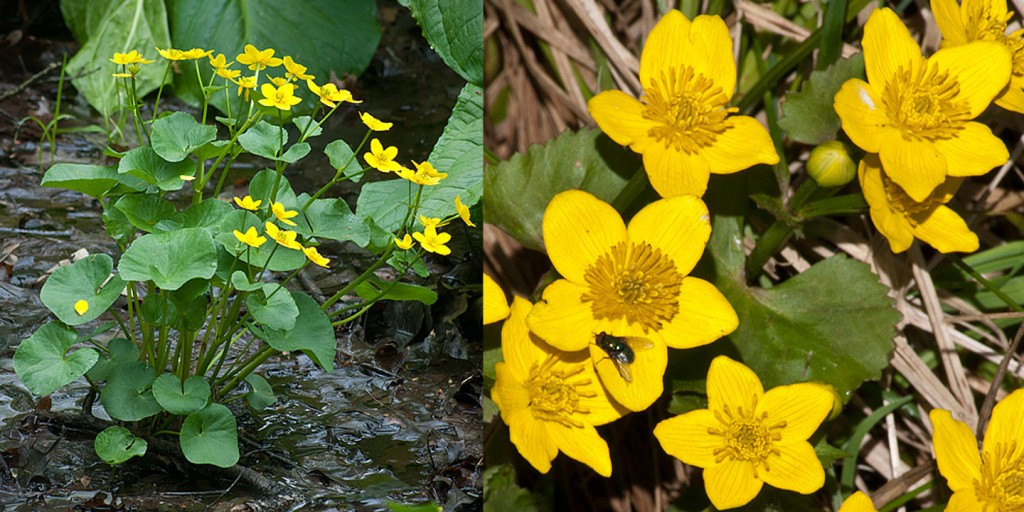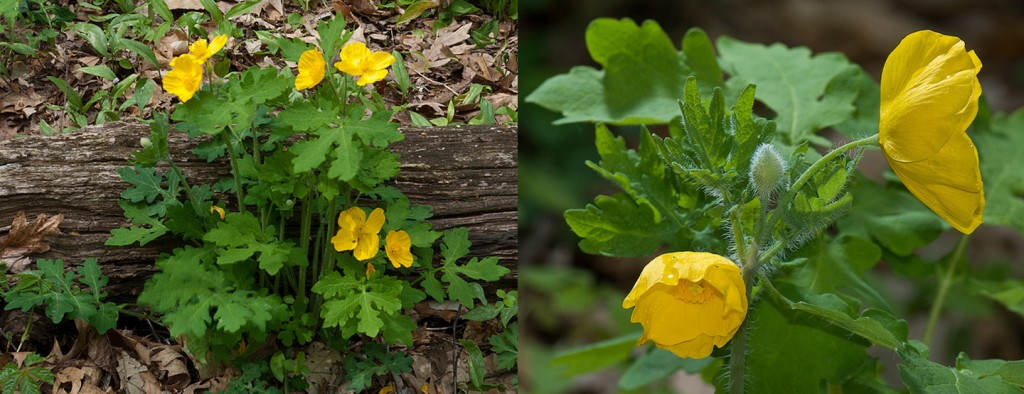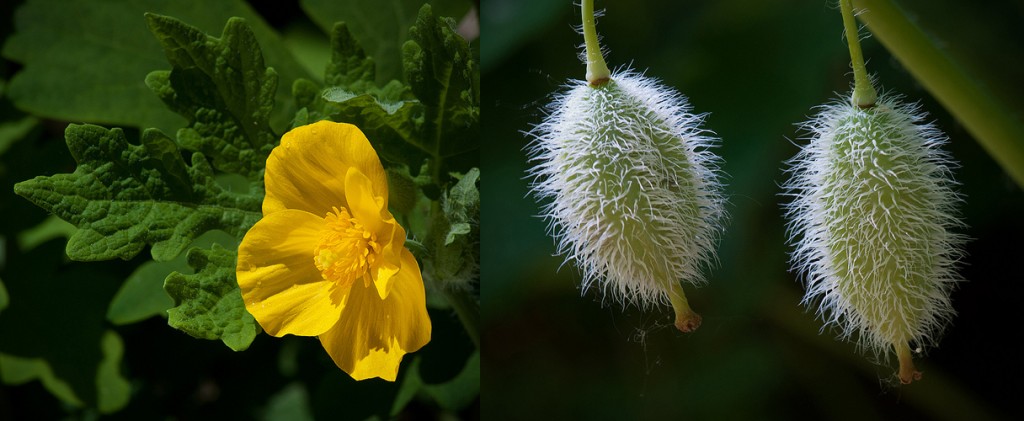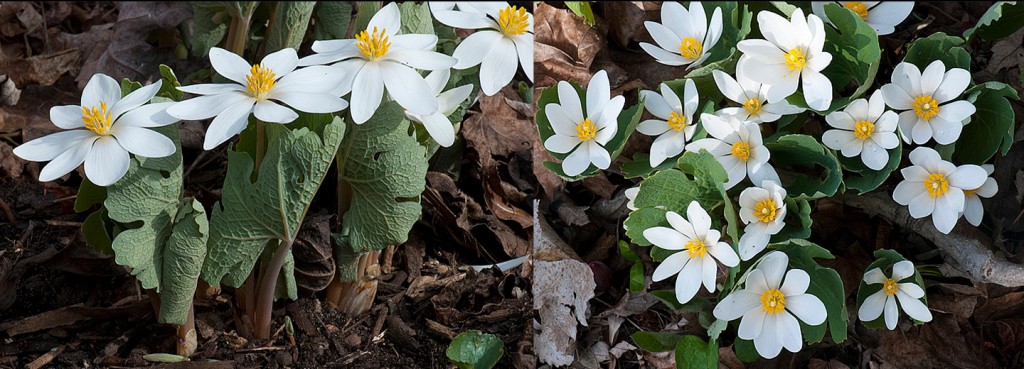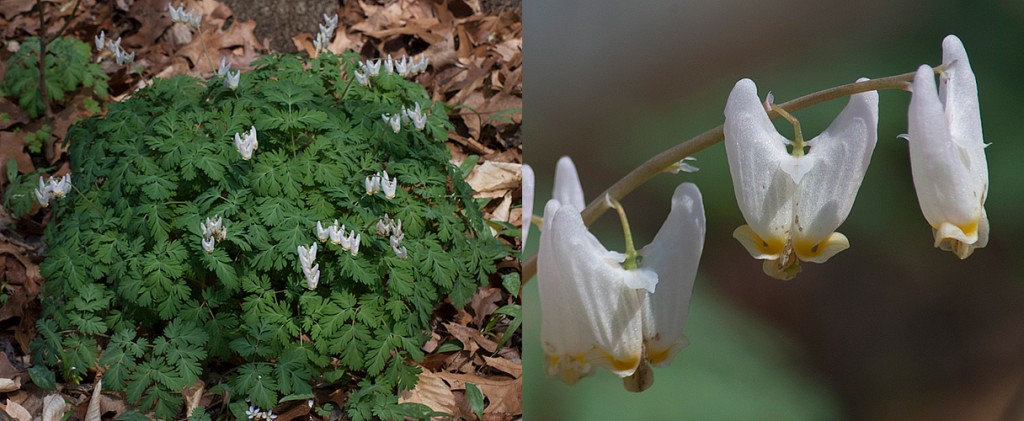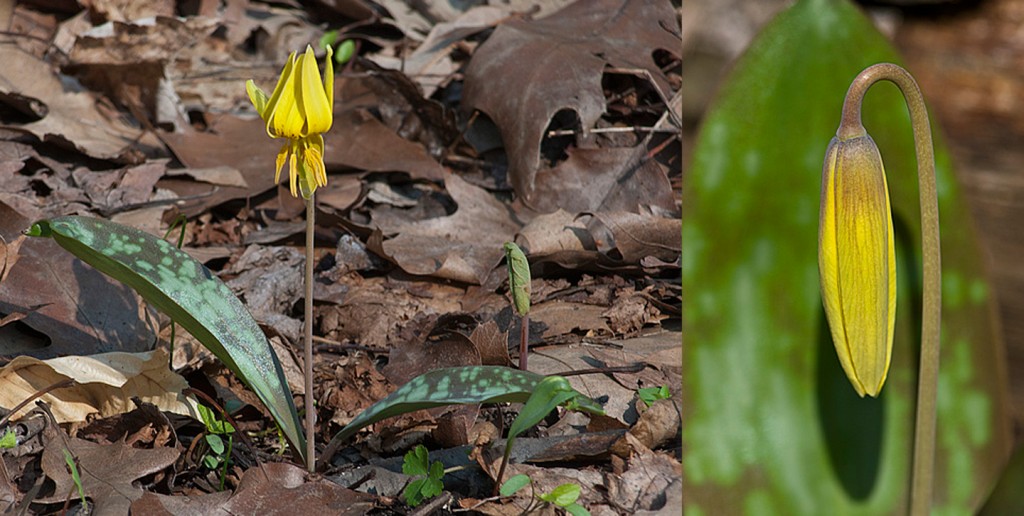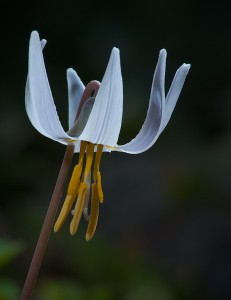Marsh Marigold (Calthus palustris) grows throughout the state. In fact, it grows around the world in the temperate regions of the northern hemisphere. It likes to grow were its roots are wet. It blooms in May in the Lower Peninsula and into June in the Upper. Its showy flowers can often be seen from a moving car.
Yellow Wood Poppy also called Celandine (Stylophorum diphyllum) occurs in the Lower Peninsula. Blooming in May, the attractive flowers provide yellow highlights in the rich woods. Later it sets hairy seedpods. Its flowers are greater than 17mm and it has opposite leaves. The similar, imported, yellow-flowered, Celandine (Chelidonium majus) has flowers less than 14mm across, alternate leaves, and smooth seedpods. Although it is smaller than the Yellow Wood Poppy it is sometimes called Greater Celandine from a translation of its scientific name.
Wild Geranium (Geranium maculatum) is a common woodland species in southern Michigan. Eleven species from this genus have been recorded from Michigan, but this one has the showiest flowers. The common garden geranium is from the genus Pelargonium that has many species and hybrids in cultivation.
Copyright 2013 by Donald Drife
Webpage Michigan Nature Guy
Follow MichiganNatureGuy on Facebook

